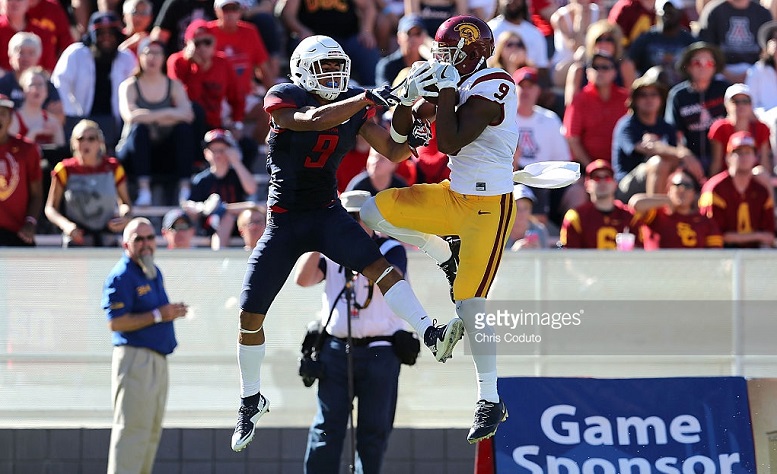You might recall that the 2017 NFL Draft was frequently spoke of in terms of the evident quality of depth that it possessed among certain positions, most notably its defensive backs. The numbers would seem to bear that out, as out of the 253 total players drafted over that weekend, a full 56 of them were defensive backs.
Breaking down between 32 cornerbacks and 24 safeties, that worked out to a full 22 percent of the entire draft being devoted to 32 teams adding to their secondary. On average, every team in the league added a cornerback, and 75 percent of teams added a safety
The draft was also deep with wide receivers, of course, as that is simply the nature in which the game is played today at the college level. The product at the level that grows the supply of talent for the NFL is obviously going to, to some degree, dictate the way that teams build their rosters, seeking out the talent where it resides.
One interesting facet of this draft is that, while as many wide receivers as cornerbacks were drafted this year, it was the secondary that was greatly favored early and often.
By way of example, by the time it was the Pittsburgh Steelers’ turn to draft in the first round, the top five cornerbacks had already gone off the board, as had the top three safety prospects. Rather than settle for the ninth defensive back, the Steelers opted to draft outside linebacker T.J. Watt.
Likewise, by the time their turn in the second round had come around, the defensive back crop at the top level of the draft had begun to become greatly impoverished. Another five cornerbacks—for 10 in total—had been drafted by their spot at 62nd-overall, as had another six safeties, for nine in total.
That meant that the Steelers would be looking at drafting the 20th-overall defensive back in the draft had they been set on taking one in the second round, all the while bypassing other positions.
On the contrary, when Pittsburgh drafted JuJu Smith-Schuster in their slot, he was just the sixth wide receiver taken in the entire draft, behind three first-rounders, all of whom went in the top 10, and then an additional two in the second round before they had their shot at one.
I find it difficult to argue in light of this that the Steelers made a mistake by taking a wide receiver in the draft where they did, despite what I believe to be a misperception that Smith-Schuster was overdrafted. I am rather confident that he would not have been available to them in the third round, by which point a total of 11 wide receivers had been taken.
It can be debated whether or not the Steelers ‘needed’ another wide receiver. It can be debated whether or not the Steelers needed to be more aggressive with an opportunity to trade up for a defensive back earlier in the draft. But the course of events falling as they had up to that point, I find it fruitless to argue against the decision that the team made at 62.








